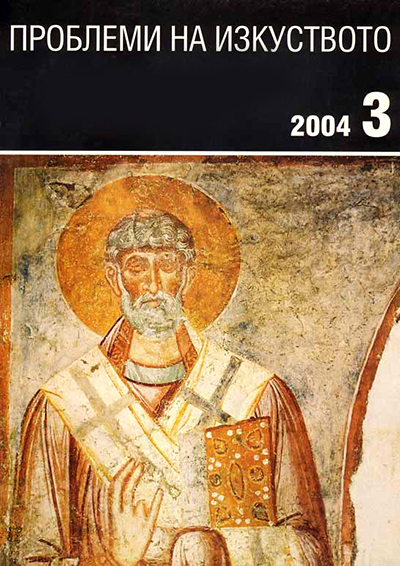От религиозното изкуство към "родното". Атон през погледа на художниците Цанко Лавренов и Поликлитос Ренгос
From the Religious to the National. Mount Athos in the works of Canko Lavrenov and Polykleitos Rengos
Author(s): Sophia HadzhipapaSubject(s): History, Archaeology, Fine Arts / Performing Arts, Cultural history, Visual Arts
Published by: Институт за изследване на изкуствата, Българска академия на науките
Summary/Abstract: For centuries Mount Athos, was a place where the cultures of Greece and Bulgaria met and interacted as a result of the mixed cloisters. During the Ottoman rule mount Athos was the custodian of the common orthodox tradition whilst later, during the 19th century, it was the place where the Balkan peoples became conscious of their national identity and begun constructing their national myth. It is therefore completely natural that artists in search of a national expression in art would seek their inspiration there. Among the Greeks we encounter the names of F. Kontoglou, A. Asteriades, S. Papaloukas, P.Ren- gos and among Bulgarians, V.Zahariev, I. Lazarov and especially C.Lavrenov who spent 100 days in Mount Athos in 1935 and created more than 20 pieces directly inspired by his stay there and continued to work on subject-matters of the Holy Mount until the end of the 1940s. This article examines the way C. Lavrenov reaches the idea of constructing ‘national art’ going through the different stages: form his first efforts in the Art Nouveau style, to the exploitation of concrete Byzantine iconographic models and the representation of his hometown Plovdiv with the means of the old Byzantine and Post-Byzantine style. As in the works of many other artists of the period, Greeks and Bulgarians, the architecture of the National Revival period (that is 18th and 19th century urban architecture) is used here as a proof of national differentiation. The meeting of Canko Lavrenov with Polykleitos Rengos in Thessaloniki, in 1935 is one of the few pieces of evidence we have of direct contact between the two countries’ artists. Lavrenov appraisal of Rengos’s works, which, according to him, ‘keep close to the Byzantine prototypes’, are shown to have contradicted the assessments of the contemporary Greek art historians. Furthermore this study will point to some similarities in the themes, composition, and points of perspective in their paintings. In this way the artistic and political project to form a “self-consciously nationalist” art from the materials of a common heritage is laid bare.
Journal: Проблеми на изкуството
- Issue Year: 2004
- Issue No: 3
- Page Range: 28-35
- Page Count: 8
- Language: Bulgarian
- Content File-PDF

